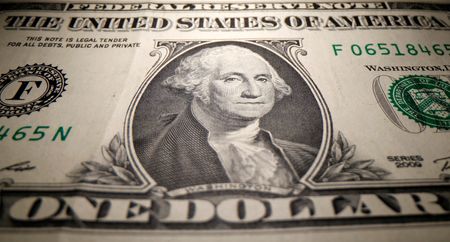By Rae Wee
SINGAPORE (Reuters) -The yen languished near a 10-month low on Friday but found some support as Japanese officials stepped up their jawboning to stem the currency’s decline, while the dollar was on track for its best week in more than a month.
The yen briefly popped higher in early Asian trading after Japanese Finance Minister Satsuki Katayama said intervention was a possibility to deal with excessively volatile and speculative moves, leaving traders on alert for signs of yen buying from Tokyo.
The currency was slightly stronger at 157.41 per dollar, though it remained not far from Thursday’s 10-month trough of 157.90. It was still on track to lose 1.8% for the week.
Much of the focus in currency markets this week has been on the yen, which has plumbed fresh lows as investors worried about the nation’s worsening fiscal position brought about by Prime Minister Sanae Takaichi’s lavish spending policies.
Takaichi’s cabinet approved a 21.3 trillion yen ($135.40 billion) economic stimulus package on Friday, her first major policy initiative.
“The elephant in the room now is mounting intervention risks,” said Vishnu Varathan, head of macro research for Asia ex-Japan at Mizuho. “Interventions are likely to be opportunistic and short-lived. Essentially, speed bumps, not barricades.”
Tokyo last spent 5.53 trillion yen, or nearly $37 billion, in July 2024 to intervene in the foreign exchange market to haul the yen away from 38-year lows.
Against the euro, the yen was pinned near a record low and last stood at 181.56. Sterling rose 0.07% to 205.94 yen, hovering near a 16-month high.
FED CUT BETS RECEDE
In the broader market, the dollar was set for a weekly gain as investors bet that the U.S. Federal Reserve is unlikely to cut rates next month.
The release of a delayed U.S. nonfarm payrolls report on Thursday painted a mixed picture of the country’s labour market, showing employment growth accelerated in September, though the jobless rate rose to 4.4%, its highest level in four years.
That reinforced the view that the Fed is likely to refrain from cutting rates at its December meeting, as policymakers continue to sail through an economic fog brought about by the U.S. government shutdown.
Against the dollar, the euro was pinned near a two-week low and last bought $1.1537, on track for a weekly decline of 0.7%.
Sterling rose 0.14% to $1.3087, though it was set to lose 0.8% for the week, with investors also anxiously awaiting Britain’s upcoming budget, a major test for the nation’s currency and bond markets.
The dollar index, which measures the greenback against a basket of peers, flirted with a 5-1/2-month peak and last stood at 100.13. It was on track to record a weekly gain of more than 0.8%, its best performance in over a month.
“The shutdown-delayed September jobs report did not provide clarity on what the FOMC will do at its much-debated December meeting,” economists at Wells Fargo said in a note.
“We remain of the view that what the Fed should do is cut the federal funds rate by 25 bps … That said, what the Fed will do is a separate debate entirely.”
They added that their call for lowering rates in December was a “close” one and that a hold “would not surprise us at this point.”
Markets are now pricing in just a 27% chance of the Fed easing rates next month.
Elsewhere, the Australian dollar was up 0.09% at $0.6446 after sliding 0.6% overnight on a broad risk-off mood in markets.
The New Zealand dollar rose 0.11% to $0.5588, having also lost 0.4% on Thursday.
In cryptocurrencies, bitcoin fell to a seven-month low of $85,387.82, while ether slid more than 2% to a four-month trough of $2,777.39.
(Reporting by Rae Wee; Editing by Jamie Freed and Thomas Derpinghaus)









